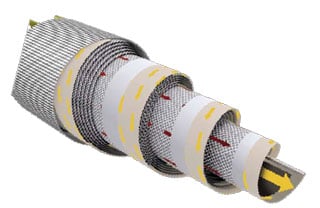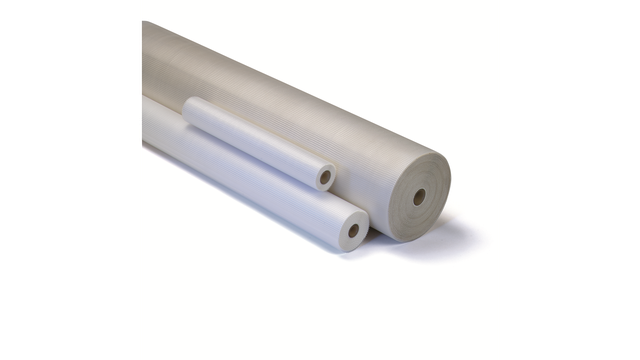NF spiralė
The nanofiltration spiral membranes from Alfa Laval are based on a unique construction of polyester support material in a sanitary full-fit design that provides optimum cleaning conditions. The spiral membranes are available with different nanofiltration membrane types and in different combinations of length, diameter and feed spacer size
Alfa Laval nanofiltration (NF) spiral membranes use membranes with pores that are very small - down to 300 daltons. Operating at pressures of up to 50 bar, small ions pass through, whereas larger ions and most organic components are retained.
Alfa Laval nanofiltration spiral membranes are used for the high-yield concentration and demineralization of products such as antibiotics, whey and ultrafiltration permeate. These special membranes are used for the retention of salts with a divalence in excess of 1, while small monovalent salts pass into the permeate. They can also be used in producing low-alcohol beverages, because the alcohol component passes through the membrane, while the colour and aroma remain in the retentate.
NF Series
Alfa Laval offers two types of spiral membranes for nanofiltration, viz. the NF and the NF99HF spiral membranes. Both types are made of thinfilm composite membrane cast on polyester support. The rejection capacity for both spiral membrane types is ≥99% based upon Magnesium Sulfate.
Benefits
- cost-effective operation due to low energy consumption
- available in different combinations of length, diameter and spacer size
- sanitary design with all materials in compliance with EU regulation (EC) 1935/2004, EU Regulation 10/2011 and FDA regulations (CFR) Title 21. USDA approved
- same membrane types available as both flat sheet membranes and spiral membranes
- allows the simultaneous desalting and concentration of a range of products in various processes
- manufactured by Alfa Laval's own membrane centre
Kaip tai veikia
The basic technology behind membrane filtration involves using a semi-permeable membrane to separate a liquid into two distinct streams.
Pumping this liquid across the surface of the membrane creates a positive trans-membrane pressure that allows any components smaller than the porosity of the membrane to pass through, forming the permeate.
Any components larger than the pore size simply cannot pass through, and remain behind in what is called the retentate. The surface of the membrane is kept free of blockages by the force of the liquid flow moving parallel to the membrane surface.
A spiral membrane comprises of a number of membrane 'envelopes' with 2 membrane sheets separated by a permeate spacer mesh, each glued to a central permeate collection tube.

Between each pair of envelopes there is a spacer which creates the feed channel, allowing the feed to flow across the length of the spiral membrane, whilst the permeate passing through the membrane into the membrane envelope flows in a spiral pattern to the permeate collection tube.
Red = Feed/retentate.
Yellow = Permeate.

